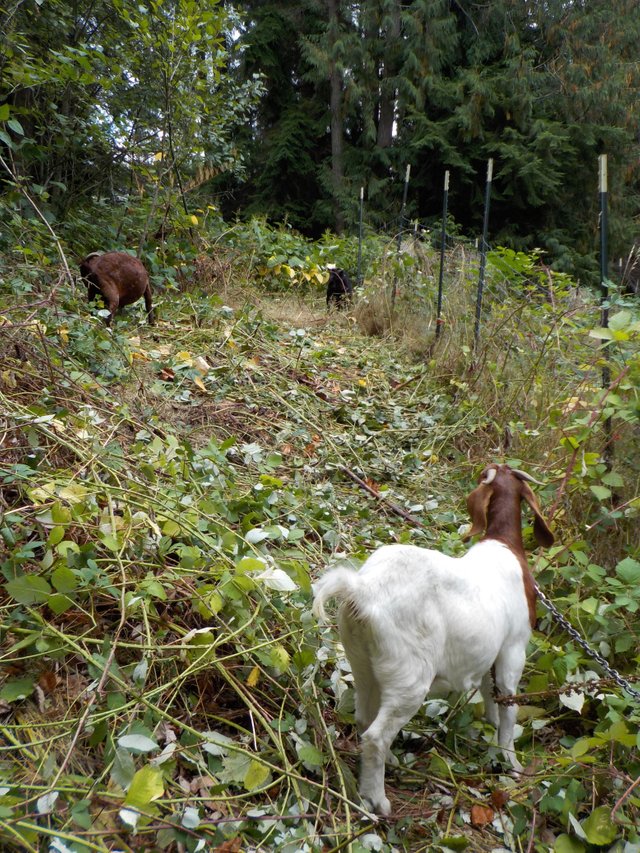
Boer goats Capra aegagrus hircus are big animals with a lot of good appetite. This is a meat breed, so they are bred for fast growth and size. They put down a lot of food, and if it was grain, I’d be bankrupt in a month, but luckily, here in The Pacific Northwest, we’ve got literal tones of forage all over the landscape, and these ungulates take it in stride.
I’ve written about the success of Leafhopper Farm goats clearing the bramble and opening up the land a few times, but wanted to show more pictures of just how efficient they are.
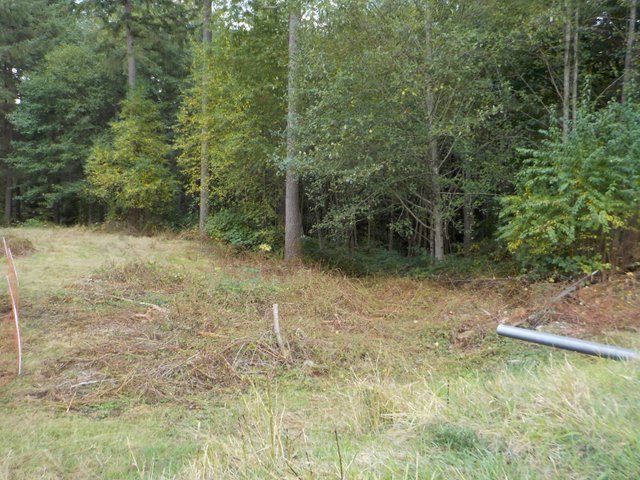
This is an area of bramble just below the outflow pipe of our pond. It’s also on an old fence line scheduled to be replaced this winter. The goats have eaten back this portion of blackberry several times through the years and will continue to defoliate as part of the slow removal plan. It is important to note that the goats do not eradicate the bramble completely, but they do weaken it’s structure and make it easy to find the root stalk for digging out. If I fenced them here for a long time, they would eradicate the bramble, but also tear up the land and potentially pick up parasites from the concentrated fecal matter piling up under hoof.
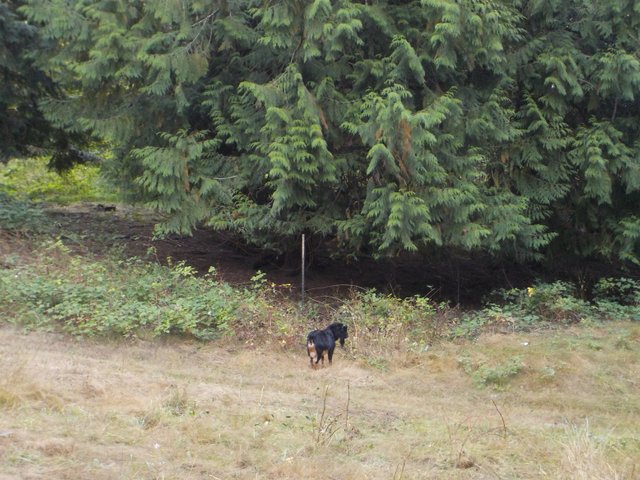
The newest member of the herd, Brock, is the future of our goat operation here at Leafhopper. In the 5 years we’ve been putting large Boer’s on the land, the bramble has been knocked down and trampled enough to make it accessible to shorter legged animals. Brock is not a Boer, but a dwarf Nigerian milking goat. He’s sired a lot of large udder does, and I hope his genes mixed with those of Brownie will produce smaller, more handelable animals with the potential to put out extra milk for use on the farm.
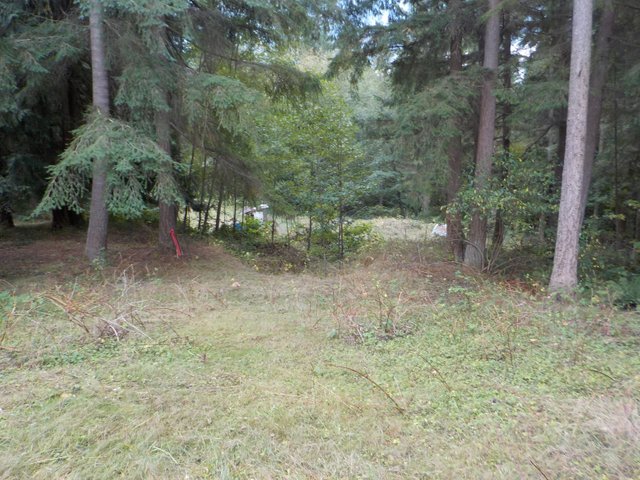
I can not imagine the land without these wonderful animals doing their work. With their diligent eating, we’ve kept the bramble from spreading without the use of a mower. In the second year at Leafhopper I did have a tractor come in to cut the fields once, but that was the only time. The goats have done the majority of clearing and brush management around the land. In many areas, complete brows down is unwanted. Certain more sensitive pants are encouraged, like the bitter cherry pictured below.
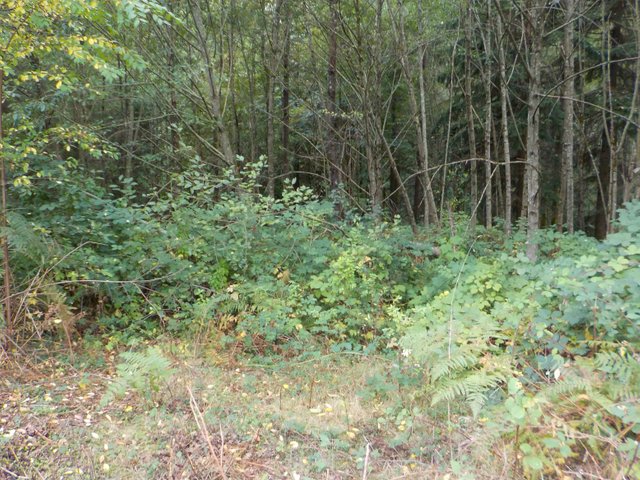
A year ago this spot was browsed back, and then the cherry came in to replace the bramble. There is still some blackberry in the mix, but the cherry is getting a chance to establish. When I pleacher the older cherries nearby later this winter, the hedge will begin taking shape. In future, this spot will become a diverse hedge for the goats to brows, but not take out. It will also shelter the area behind, which is a slope with alders and other more established native ground covers. I also know from the trail cams, that this area is popular with wildlife, and want to preserve the corridor for them.
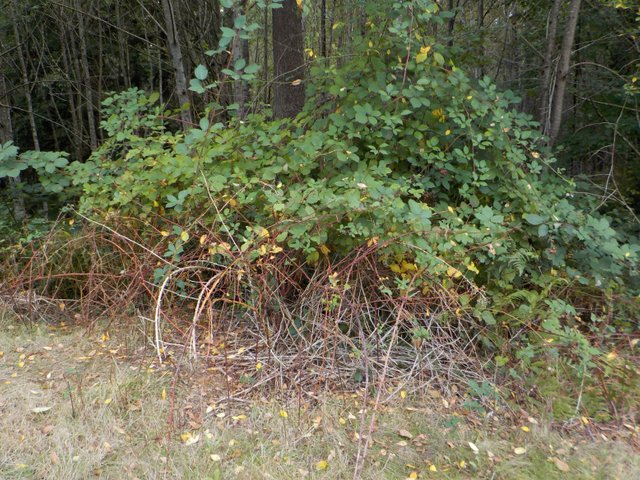
Above is an example of goat brows done by Brock. He’s short enough to keep to the low stuff, which protects young shrubs from being decimated. The Boers will knock it all down to get to the tops of the young trees and shrubs. This is another reason we’re downsizing the herd. What blackberry remains will be compartmentalized in areas we don’t mind having a little bramble and berries. Remember, blackberries produce fruit, and nesting habitat for many bird species. It’s not all bad. But, preventing it from spreading is crucial, especially across fence lines from neighbors.
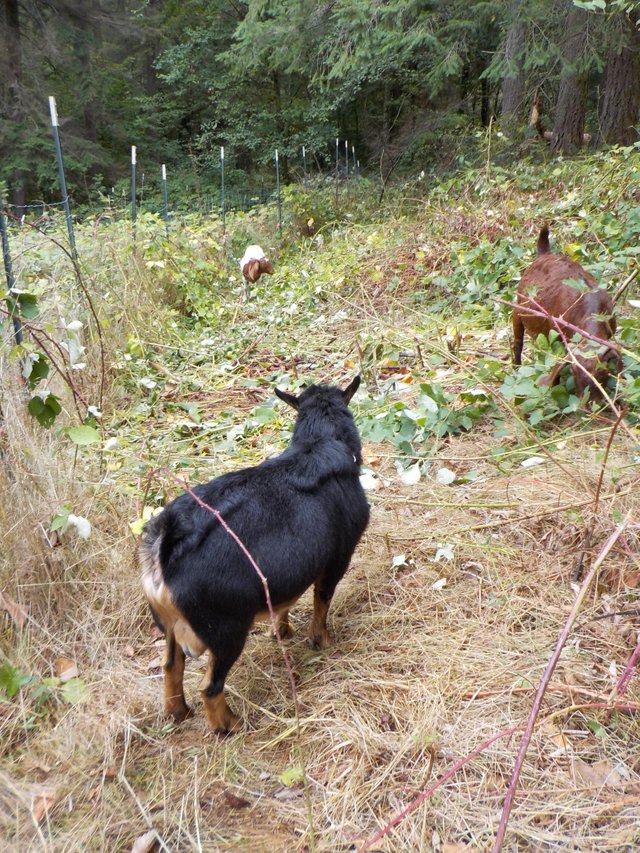
Brock bred Brownie and Branwin this Fall, so we’ll have two kiddings in early Spring! I’m betting Brownie will have two kids, and Branwin will have one, as it is her first kidding. A goat can have 4 kids in one birth, but the usual number is two. A goat’s first kidding is one to allow the body a chance to grow into birthing a little more gently. Since Branwin is over a year old, she’s mature enough to breed. If you breed a goat too young, she’ll end up stunted (like most any young mother) because the energy that would have matures her own body goes into growing the baby instead.
We’ll breed consistently for the next three years if everyone stays healthy and happy. Hopefully at the end of those three years, we’ll have the pick of fine milking goats and a herd fit for managing the bramble while offering their invaluable biomass in the form of manure, meat, and milk. The three Ms. 😉
Liz Crain
@leafhopperfarm

To learn more about Leafhopper Farm visit us at:
LeafhopperFarm.com, YouTube, Twitter & Minds
Boers are awesome!
Great for brush clearing and quite marketable for meat.
Many farmers in Oklahoma are starting to use goats.
Great to see growers not only putting more animals on the land, but putting those animals to work!
Downvoting a post can decrease pending rewards and make it less visible. Common reasons:
Submit
Congratulations! This post has been upvoted from the communal account, @minnowsupport, by dudebro from the Minnow Support Project. It's a witness project run by aggroed, ausbitbank, teamsteem, theprophet0, someguy123, neoxian, followbtcnews/crimsonclad, and netuoso. The goal is to help Steemit grow by supporting Minnows and creating a social network. Please find us in the Peace, Abundance, and Liberty Network (PALnet) Discord Channel. It's a completely public and open space to all members of the Steemit community who voluntarily choose to be there.
Downvoting a post can decrease pending rewards and make it less visible. Common reasons:
Submit
Those are nice goats. I wish I could pet those goats. They are cute. BTW, where can I find them?
Downvoting a post can decrease pending rewards and make it less visible. Common reasons:
Submit